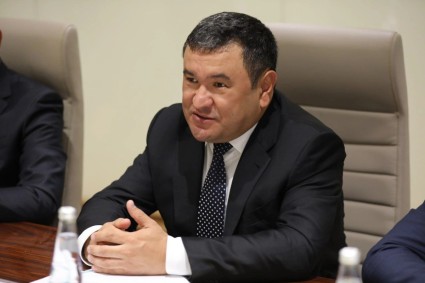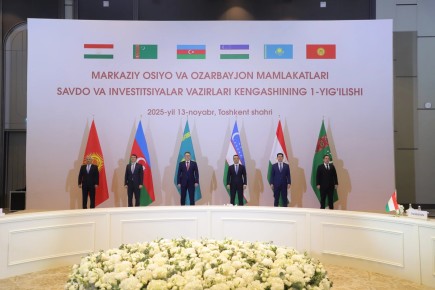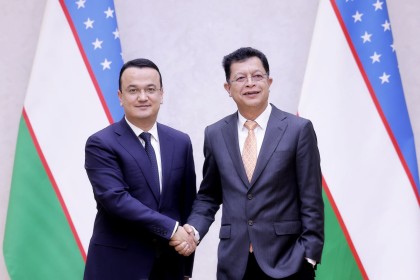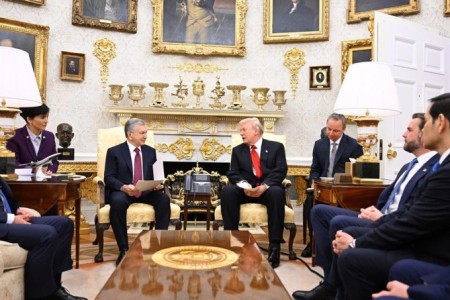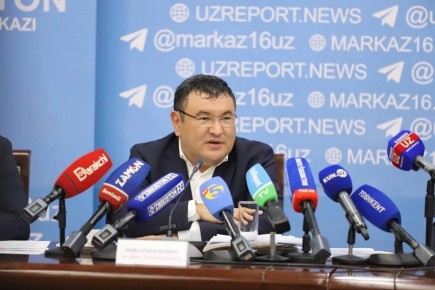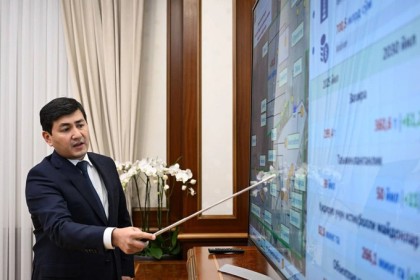Long beholden to fossil fuels for all of their energy, the two most populous countries in Central Asia seem to finally be tapping into their abundant renewable resources.
Kazakhstan boasted early this year about some impressive renewable energy figures, while its southern neighbor, Uzbekistan, is planning to construct several projects as it moves to increase its usage of "green energy."
Kazakhstan's Energy Ministry released figures on January 9 that showed an increase in output during 2019 from three renewable energy sources: hydro, wind, and solar power.
The ministry saidthese green power sources added 504.5 megawatts (MW) to the country’s electricity grid last year.
And the ministry said 18 more renewable power sources are due to come online in 2020. Once they do, the total output from renewable sources will be some 1,655 MW, an increase of more than 600 MW from current production of 1,050 MW.
So what exactly do these numbers mean?
According to the Kazakhstan Electricity Grid Operating Company's website, at the start of 2019 the country had 18,894.9 MW of available capacity, which is the amount they actually generate. So 504 MW looks like a drop in the bucket.
But it is, actually, a relatively significant amount of energy.
To compare, the Kyrgyz and Tajik capitals, Bishkek and Dushanbe, respectively, have large thermal power plants (TPP) providing those cities with electricity and heat.
Chinese company Tebian Electric Apparatus (TBEA) built the Dushanbe-2 TPP and renovated the Bishkek TPP. According to the TBEA website, the total installed capacity of Dushanbe's coal-fired TPP is 400 MW. And the Chinese company replaced four 50-year-old units with two new 150 MW units at the Bishkek heat and power plant which, when added to existing units still in operation, boosted the TPP’s capacity to some 812 MW.
So, comparatively, 504 MW of electricity is not an insignificant amount of energy.
The Kazakh Energy Ministry also noted great international interest in helping develop the country’s renewable power resources.
Tashkent trying to catch up
Uzbekistan is behind Kazakhstan in developing its renewable energy sources but is also moving toward the use of more green-energy resources.
When Shavkat Mirziyoev came to power after President Islam Karimov’s death in 2016, he changed a lot of policies and put an emphasis on the development of the country's renewable power resources.
Uzbekistan’s hydropower ambitions aims for water-generated power to account for nearly 16 percent of the country’s energy balance by 2030.
Uzbekistan is also planning to tap other renewable energy sources.
There were reports in September that Chinese company Lioaning Lide was building a wind farm in the Gijduvan district of Uzbekistan’s Bukhara Province that will produce some 200 MW by autumn 2020 and eventually some 1,500 MW when the project is complete.
Spanish company Siemens Gamesa is building a 100 MW wind farm in Uzbekistan’s Navoi Province and Turkish company ETKO CO Enerji A.S. is building a 600 MW wind farm in the Baysun district of Surhandarya Province.
In October 2019, the Uzbek Energy Ministry announced that U.A.E. firm Masdar was awarded a contract to build a solar park with 100 MW of capacity in Navoi Province, which is also part of the World Bank’s Scaling Solar program.There is already a 130 MW solar park in Namangan Province, and French company Total Eren has builta 100 MW photovoltaic power station in the Nurabad district of Samarkand Province.
Uzbek Deputy Minister of Investment and Foreign Trade Shukhrat Vafaev said in October that the country would soon announce tenders for the construction of a solar park with a 400 MW capacity and another that could produce 500 MW annually.
In January, Viktor Vekselberg, the head of Russia’s Renova Group, met in Tashkent with Uzbek Energy Minister Alisher Sultanov and expressed his company’s interest in assisting to build solar parks in Uzbekistan. He also offered to form a joint venture to produce solar panels.
Uzbekistan is planning on increasing renewable energy resources so that they would make up 25 percent of the country's total power needs by 2030.
Completion of just the wind farm and solar park projects listed above would give Uzbekistan more than 3,000 MW of additional energy, which helps power a country that the Energy Ministry forecasts will consume twice as much energy in 2030 as it currently does.
Uzbekistan is a country that endures severe power shortages at different times of the year. At least one Uzbek website reported that the country imported 33 percent more electricity than usual in 2019.
Also Going Nuclear?
Along with renewables, Uzbekistan has plans to add another source of alternative energy to its energy balance: nuclear power.
Aleksei Likhachev, the chief of Russian state nuclear power company Rosatom, said on January 15 that negotiations on the construction of a nuclear power plant (NPP) would conclude before the end of March and actual construction would start in 2022.
Construction of an NPP will undoubtedly be a topic of conversation when Mirziyoev meets with his Russian counterpart, Vladimir Putin, in a meeting reportedly set to take place later in February.
The NPP will have two VVER-1200 units, so it will add another 2,400 MW, which will probably be welcome news to those residents of Uzbekistan who are coming out of a winter that saw power shortages and blackouts hit areas all around the country.
But long-term it seems Uzbekistan and Kazakhstan are moving toward more eco-friendly sources of energy and -- along with the other countries of Central Asia -- they can count on outside help from the European Union, the European Bank for Reconstruction and Development, the Asian Development Bank, and others.
Energy-wise, the future in Central Asia appears to be looking brighter -- and greener.


